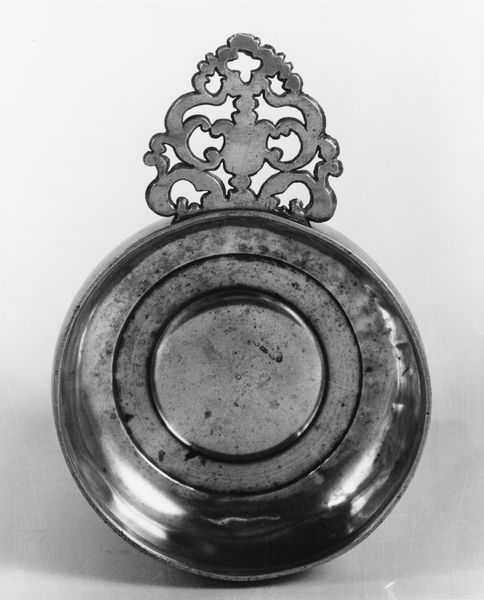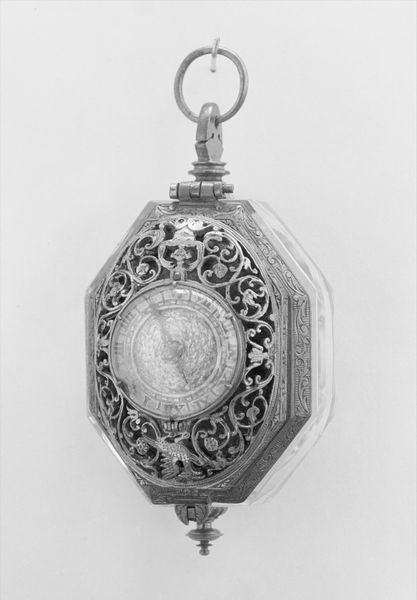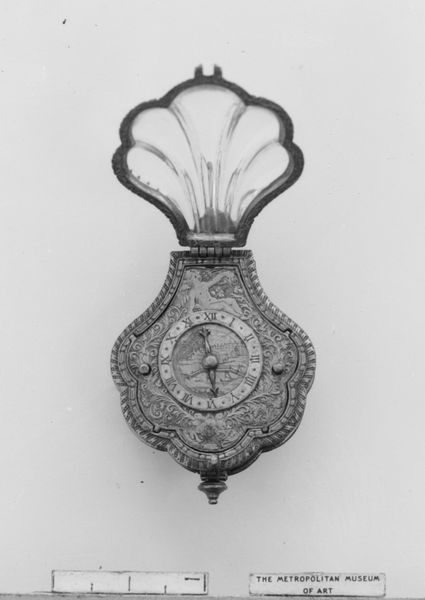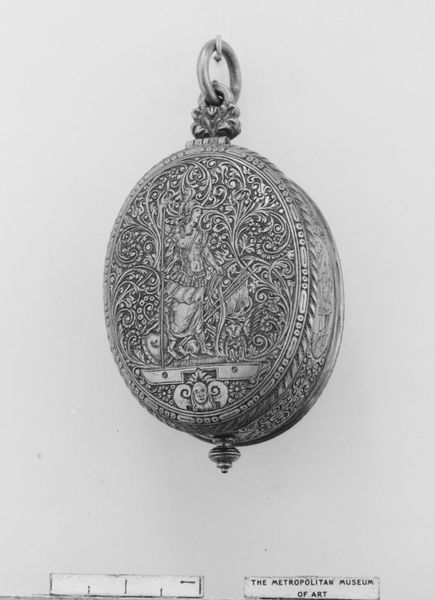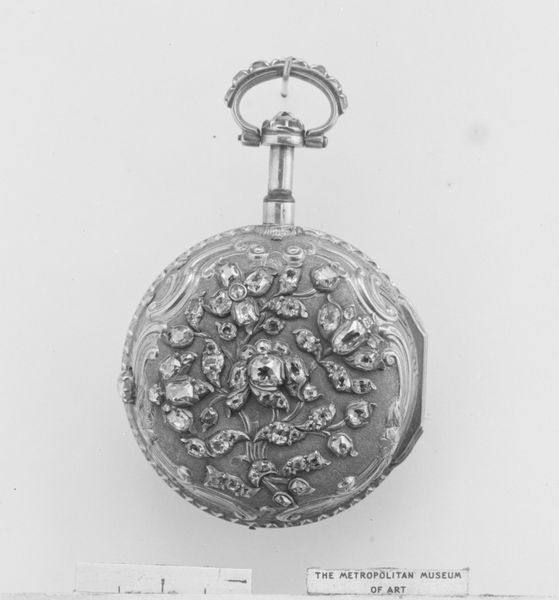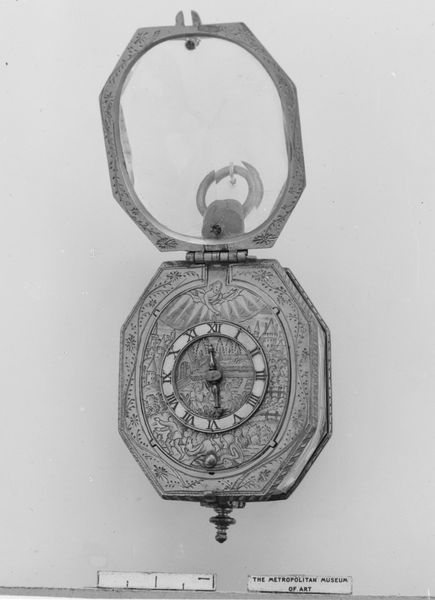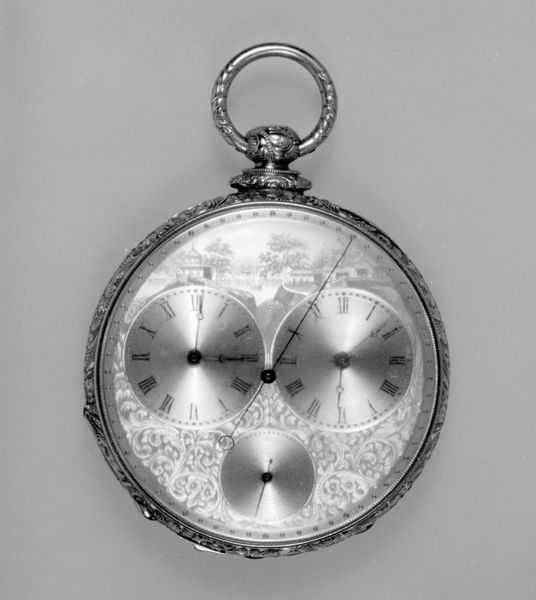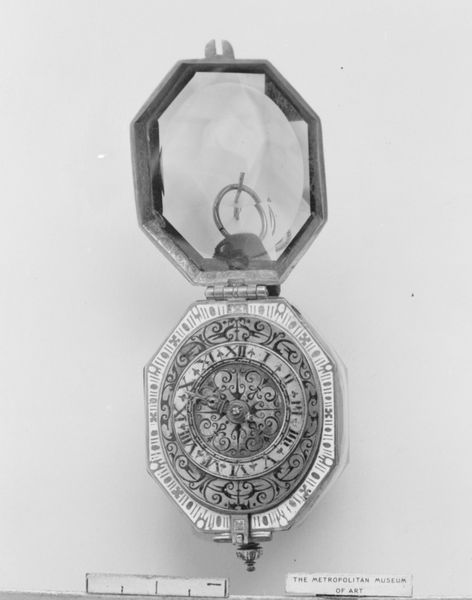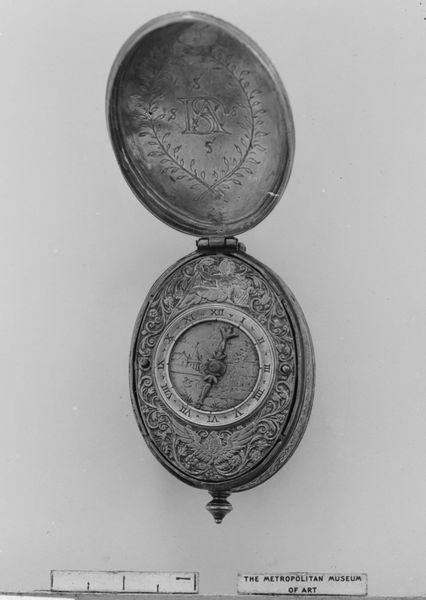
metal, sculpture
#
baroque
#
metal
#
sculpture
#
decorative-art
Dimensions: Diameter: 2 in. (5.1 cm)
Copyright: Public Domain
Editor: Here we have a Baroque watch, crafted in metal, around 1675 to 1685, by Pierre Derssigny. Looking at all the detail, it almost seems like the maker wanted to trap time, not tell it. What can you tell us about this piece? Curator: Time captured, exactly! Clocks have always been so much more than functional. Look at the engraved cherubs, the dense floral motifs… They aren't just decoration, they speak to the perceived qualities of the period. How do you interpret the balance between the mechanical aspect of the watch and these flourishes? Editor: It’s interesting. The flowers and cherubs feel light and joyful, but the actual function of a watch reminds us of our own mortality and passing time. Is that intentional, do you think? Curator: I think you're on to something. Baroque art often played with contrasts: life and death, sacred and profane. Think about the phrase "memento mori"—remember you must die. The beauty and detail could serve as a reminder to make the most of your fleeting time. Does that alter how you feel about it now? Editor: Absolutely, it feels much more profound than just a decorative object. All these details, hinting at a bigger picture...I'll never look at a watch the same way again! Curator: That's the magic of symbols. They condense complex ideas into accessible forms, inviting us to contemplate our place in the world. This small object is like a microcosm of the Baroque worldview.
Comments
No comments
Be the first to comment and join the conversation on the ultimate creative platform.
